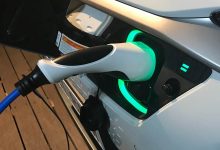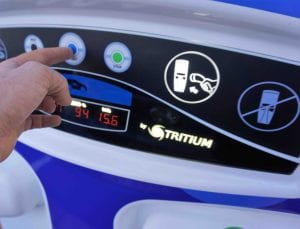Alex Shoolman’s article The future of legacy car manufacturers makes a lot of sense. I certainly wouldn’t want to have shares in most of the existing car manufacturers.
But my view of the transport transformation goes beyond his vision.
First, I see many factors reducing demand for cars. These include e-bikes, e-scooters, e-skateboards and lots of other smaller electric vehicles.
Virtual solutions will reduce the need for travel, they include virtual shopping, better organisation of cities, virtual health care and education, virtual service provision, share car services, autonomous vehicles, and lots more options we haven’t thought of yet. These alternatives will work for the young, old, disabled, poor and unpaid taxi drivers (otherwise known as parents and carers).
The Chinese have over 150 million e-bikes, for good reason. Cars just take up too much space in our increasingly crowded urban systems. They cost too much. They won’t be able to compete for a lot of services.
With regard to cars, it is clear that the basic EV architecture will be cheapest to make. Electric motors with simple transmissions and lots of smarts make obvious sense.
Existing car manufacturers will struggle, as they have enormous sunk capital locked-into incremental change, as well as liabilities for worker pension funds and supply, sales and maintenance chains.
But, given that most people’s perception of what’s possible is shaped by their past experiences, they will be able to get away with hybrids using steel bodies and structures for a while. Just look at the popularity of Toyota’s new RAV 4 hybrids – 6 month waiting lists …..
A simple chassis will allow different bodies to be ‘plugged’ on (memories of the old VW beetle used for dune buggies, Karmann Ghia sports cars, etc) but will capture economies of scale.
It will support a wide range of body designs for different purposes, and support new industries that 3-D print personalised bodies, freight, utility and passenger carrying models. This will underpin growth in the custom car industry while disrupting the body repair sector.
I see a role for range extender engines – not traditional plug-in hybrids, but small, light, efficient 15 to 30 kilowatt multi-fuel engine/generators that are not mechanically connected to the drivetrain (see https://www.theengineer.co.uk/delta-motorsport-launches-gas-turbine-range-extender/).
These will provide a transition path in the short term by providing a ‘security blanket’ to overcome range anxiety, while optimising vehicle efficiency and performing multiple useful roles in the longer term.
Even with efficient energy recovery systems and improving energy storage density, bigger batteries add to vehicle weight both directly and indirectly through a need for stronger structures, bigger wheels and tyres and other components.
Weight increases energy consumption and wear and tear. So carrying large batteries around all the time, when their range is only needed very rarely, is inefficient (and the extra, rarely utilised capacity is expensive, though costs are declining).
A range extender engine/generator can complement a relatively small battery with, say 200 kilometres range – a week of ‘average’ car use. Many drivers may rarely or never use it, but range anxiety is an emotional barrier to adoption of EVs, linked to lack of personal experience and fear of being stranded.
So an extender may play many roles beyond overcoming range anxiety (especially in remote rural areas where chargers may not be available, when there may be long queues at chargers such as on the start and end of peak holiday periods, or just because people worry about the consequences of ‘running out of power).
It could run equipment while camping, run a home off-grid or during power grid failures, or provide power at a construction site. If a tiny 15 kW engine/generator is switched on at the start of a long journey, range is dramatically increased. If the battery is flat, it provides a ‘limp-home’ mode.
We are in the early days of disruptive change that will reduce the need to travel, provide a wider range of options for much of our travel, and reframe our thinking about cars, light commercial vehicles and freight transport.
No-one can predict the outcome, as many different players will compete to offer disruptive solutions. It will be exciting, and much business blood will be spilled.
Alan Pears, AM, is one of Australia’s best- regarded sustainability experts and is a senior industry fellow at RMIT University..









